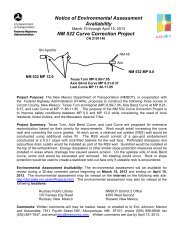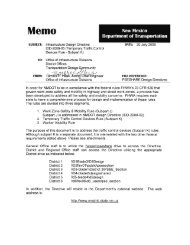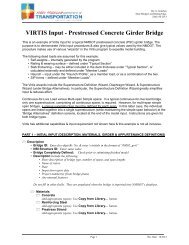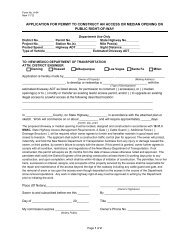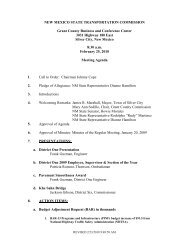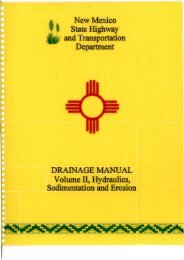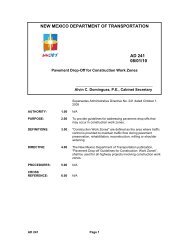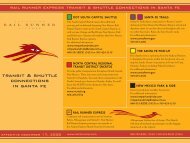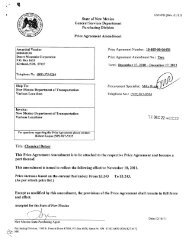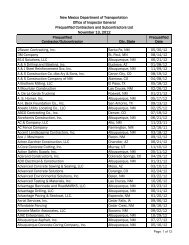Sampling of Aggregates AASHTO T-2-91 - New Mexico Department ...
Sampling of Aggregates AASHTO T-2-91 - New Mexico Department ...
Sampling of Aggregates AASHTO T-2-91 - New Mexico Department ...
Create successful ePaper yourself
Turn your PDF publications into a flip-book with our unique Google optimized e-Paper software.
Aggregate T-2 January 2012<br />
3. Obtain increments as required. The increments combined shall meet or exceed the<br />
minimum mass described in No. 2 above. Again, locations for incremental samples should<br />
be determined using random number methodology. Windrow and Roadway samples<br />
require one (1) increment each. Flowing Stream/Bin, Conveyor Belt, and Stockpile<br />
samples require three (3) increments each.<br />
4. Place sample in suitable container. Transport container shall be constructed to prevent<br />
contamination, loss <strong>of</strong> material, loss <strong>of</strong> moisture, and contain fines or dust and prevent<br />
damage to contents from mishandling during shipment. Cloth bags are commonly used for<br />
aggregate. For material containing significant quantities for fines or dust, an alternate<br />
container such as a can or box may be more appropriate, in order to minimize loss <strong>of</strong><br />
material.<br />
5. Label sample properly. Minimum information shall include project I.D., name <strong>of</strong> sampler,<br />
sample location, date sampled, description <strong>of</strong> material and purpose <strong>of</strong> sample (tests<br />
required). Labels shall not smudge or run when wet and be affixed to the container in a way<br />
that it will not become detached or lost.<br />
Methods:<br />
A. Flowing Aggregate Stream (Belt or Bin Discharge): (4.3.1)<br />
1. Sample entire cross-section <strong>of</strong> discharge. It will probably be necessary to use a<br />
sampling box or a pan on rails beneath the discharge to intercept the flowing aggregate<br />
stream. Never attempt to intercept the stream with a shovel or a scoop, as this can cause<br />
serious injury. Obtain three approximately equal increments.<br />
2. Avoid sampling the initial discharge or final few tons <strong>of</strong> aggregates (Note 3).<br />
<strong>Sampling</strong> the initial and/or the final portion <strong>of</strong> material increases the chances <strong>of</strong><br />
obtaining a segregated sample. Additionally, bins should be kept as full as possible<br />
during the process to minimize segregation.<br />
B. Conveyor Belt: (4.3.2)<br />
1. Stop Conveyor. This is necessary for safety as well as for proper sampling technique.<br />
2. Insert a template conforming to the shape <strong>of</strong> the conveyor belt. A template shall be<br />
inserted perpendicular to the belt at a spacing that yields the desired increment <strong>of</strong><br />
material. Three increments are required to meet the mass in Table 1.<br />
3. Collect all material inside the template. Avoid spilling any material and collect all<br />
fines with a scoop, shovel, dustpan, and brush into a suitable container.<br />
C. Roadway: (4.3.4)<br />
1. Use template to mark area to be sampled. Obtain one sample, at a random location,<br />
which totals the minimum mass in Table 1.<br />
2. Sample the full depth <strong>of</strong> the material. This helps ensure representative material with<br />
minimal segregation.<br />
3. Avoid contaminating sample with underlying material.<br />
<strong>New</strong> <strong>Mexico</strong> Technician Training and Certification Program



